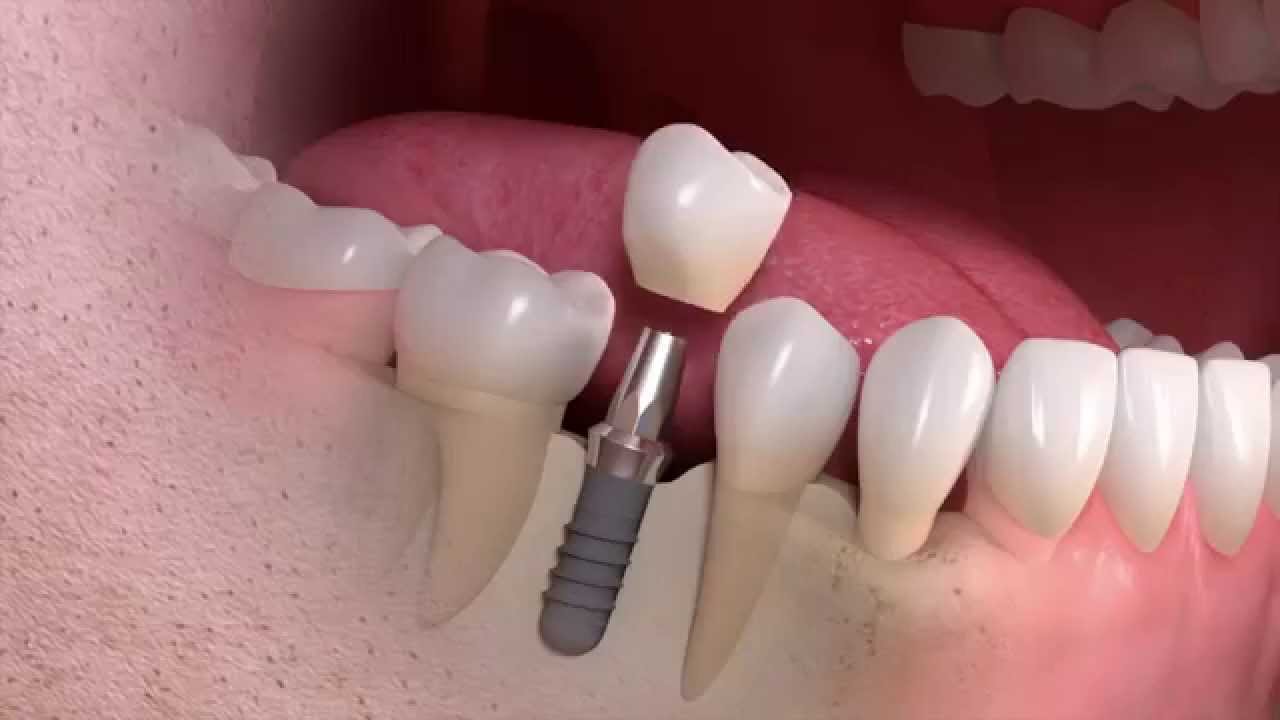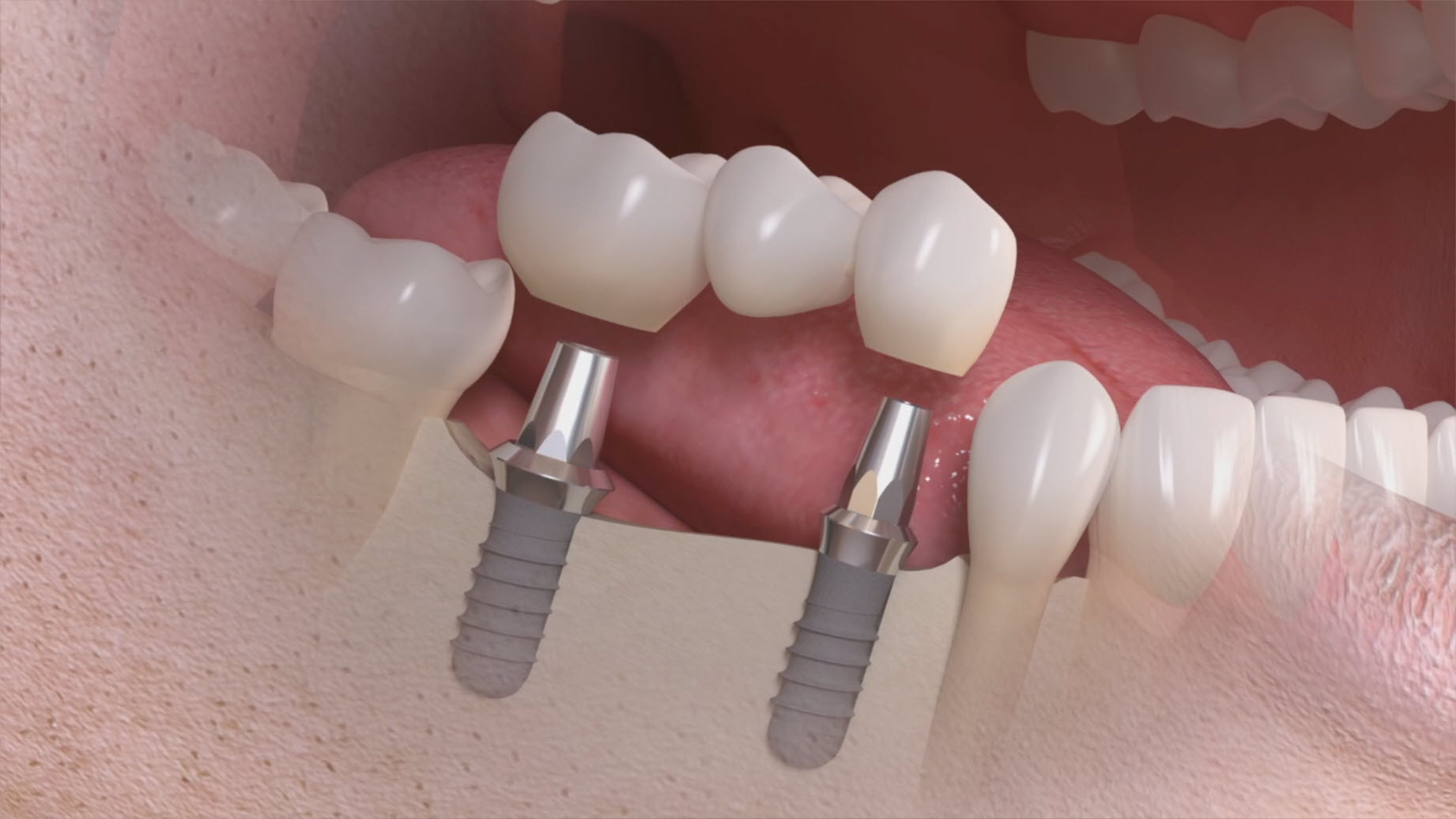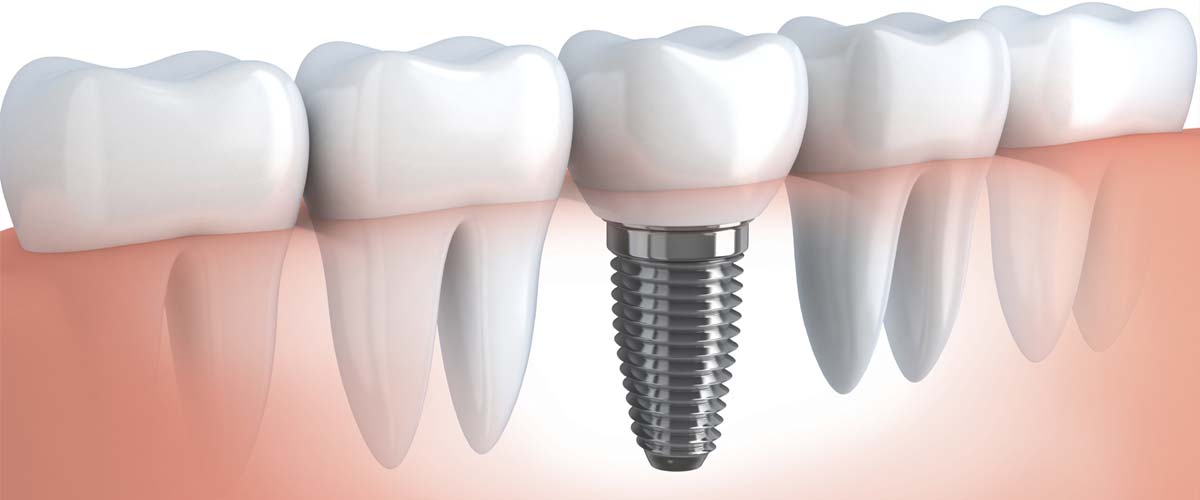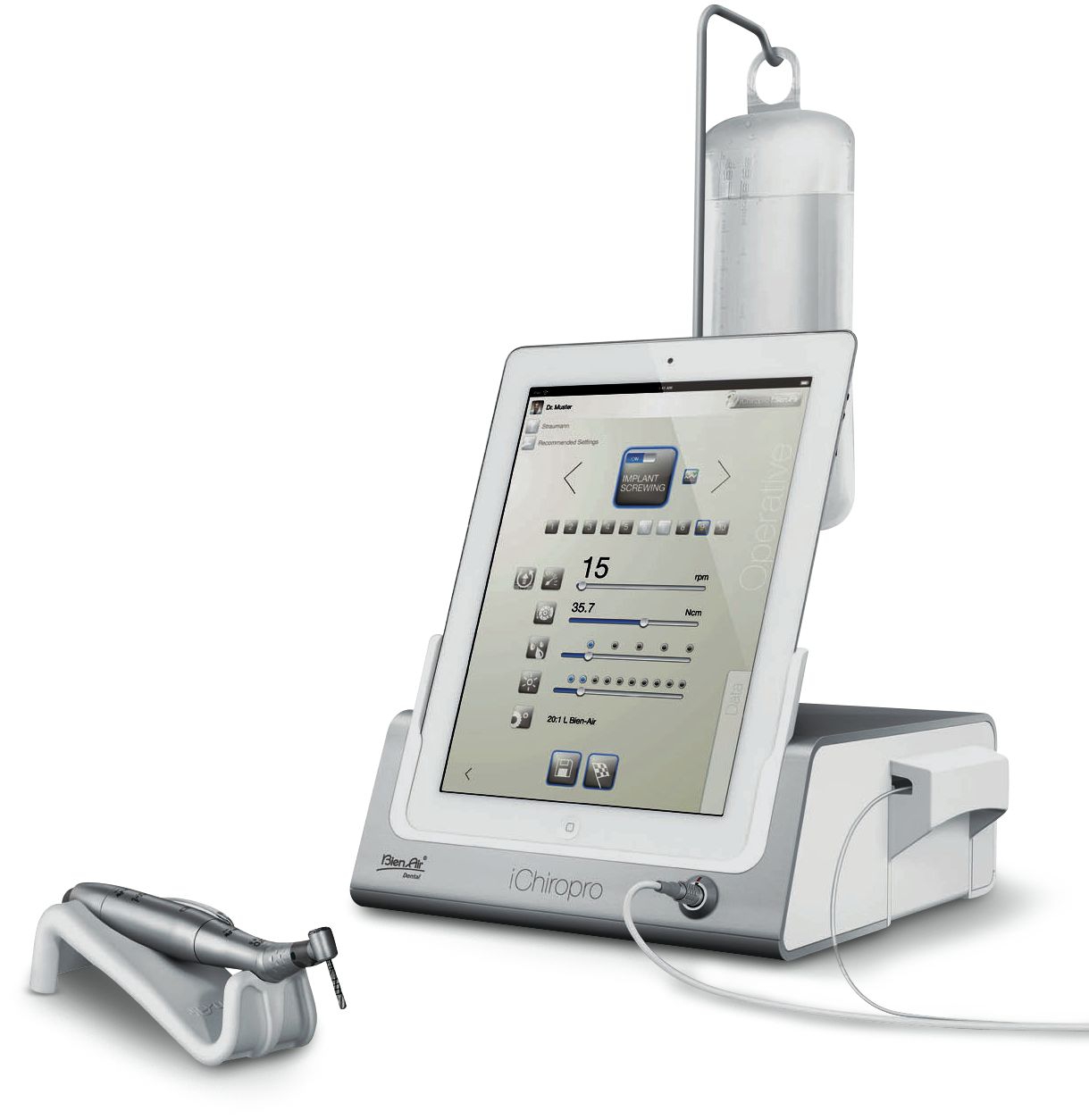Dental implants
- Diagnosis
Dental implants have, for many decades, been used to replace one or more missing teeth. In the last 20 years, their use has become more widespread as advances in technology of materials and surgical techniques have made them more popular and easy to use.
Implants can replace single or multiple teeth and may be used as abutments for bridges or hybrid removable dentures.
- Therapy
-
Implant therapy
What are dental implants?
Dental implants are artificial tooth roots made of titanium. They are inserted in the jaw bone where, after a period of time, they form a strong bond with the bone and act similar to natural teeth. Implants are used to replace teeth that have been lost due to tooth decay, fracture or other reasons.
Implants consist of two parts: The body of the implant, a cylindrical or root-shaped titanium structure placed in the bone and the abutment, an attachment fitted on top of the implant, which holds the artificial tooth or bridge in place. Dental implants are inserted by a surgical procedure, performed under local anaesthesia in the dental office. Following integration with the bone, the dentist can take an impression of the implant and the new teeth are manufactured in a dental laboratory.
Are dental implants a suitable treatment for everyone?
Dental implants are suitable for almost every patient of 18 years and more that have lost one or more teeth.
The conditions for a suitable candidate are:
- Good oral health: Patients with a good state of oral health, with absence of inflammation and tooth decay. If implants are placed in sites with untreated gum disease, there is a high risk of infection around them which may result in bone destruction and eventual loss of the implants.
- Good oral hygiene: implant treatment success is highly dependent on the patient's ability to keep a good level of oral hygiene. Lack of hygiene results in inflammation around the implants and may lead to failure.
- Jaw bone anatomy: Implant placement requires sufficient bone width and height in the areas of interest. If the amount of bone is not enough to accommodate the implants, it may be augmented by one of the various bone augmentation procedures available. In extreme cases of bone loss, where bone augmentation cannot be performed, implant placement may not be possible.
- Good general health: Patients with compromised general health, for example patients with impaired immune system, patients with bone disorders or patients with uncontrolled diabetes cannot be treated with dental implants.
- Smoking: Smoking is a risk factor for dental implants and may have a negative impact on their success and survival. Smoking cessation is highly recommended if dental implants are considered as an option.
What does implant treatment involve?
1. Clinical and radiographic examination: Proper treatment planning requires a thorough examination of the mouth which includes x-ray imaging of the areas of interest. The dentist may take impressions of the mouth and construct a model of the final restoration. X-ray examination is absolutely necessary and may include two-dimensional images (standard x-rays) or three-dimensional (cone-beam computed tomography), in complex cases where anatomical structures need to be protected.
2. Surgical implant insertion: Dental implants are inserted in the jawbone by a surgical procedure performed under local anaesthesia. Depending on the amount of bone available, implants can be placed with or without bone grafting.
3. Impressions and final restoration: 2 to 6 months following surgery, when the osseointegration process is complete, the dentist takes impressions of the implants and the prosthesis is manufactured in a dental laboratory. Following fitting, the dentist will need to review the new crowns or dentures to ensure the implants are stable and that the patient is happy with function and aesthetics.
4. Annual review: In order to ensure that both the implants and the prosthetic restoration are well-maintained, the dentist performs a clinical and radiographic examination once a year. Oral hygiene is also checked and modified, if necessary.











